Premium Only Content
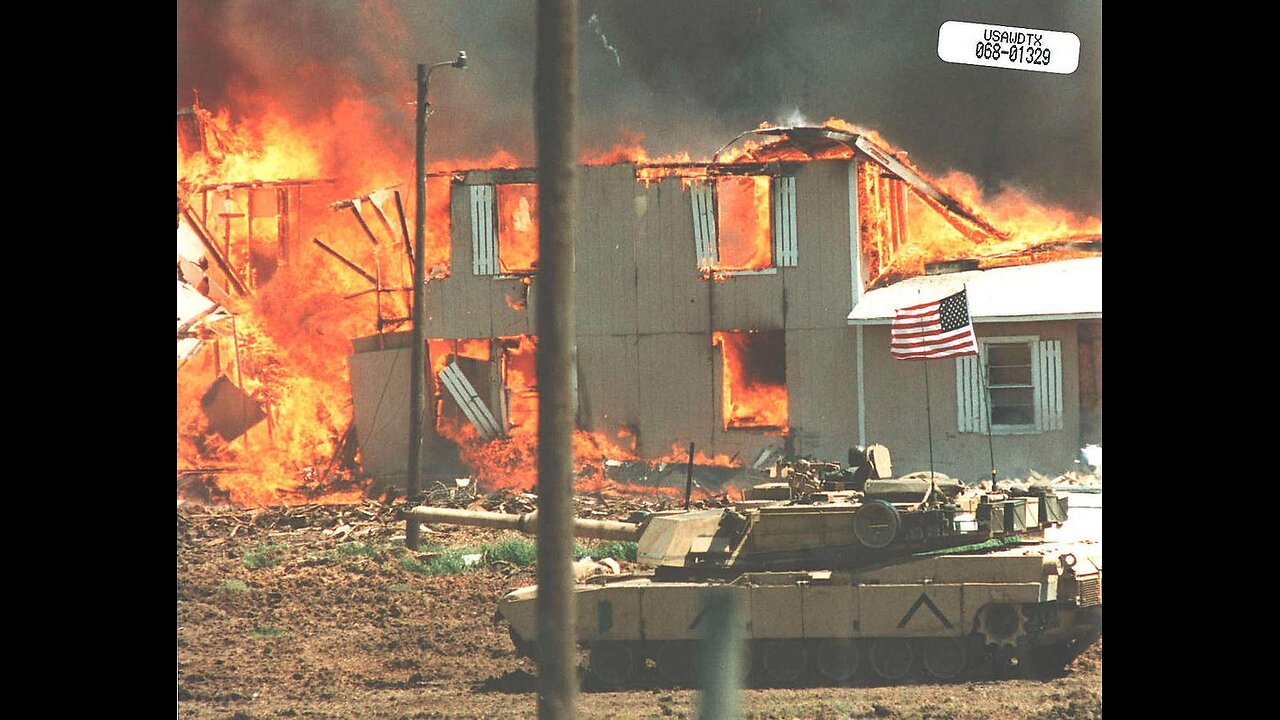
Waco Survelliance Camera Footage (1993)
The Waco siege, also known as the Waco massacre,[7][8][9][10] was the siege by U.S. federal government and Texas state law enforcement officials of a compound belonging to the religious cult known as the Branch Davidians between February 28 and April 19, 1993.[11] The Branch Davidians, led by David Koresh, were headquartered at Mount Carmel Center ranch in unincorporated McLennan County, Texas,[12][13][14] 13 miles (21 kilometers) northeast of Waco. Suspecting the group of stockpiling illegal weapons, the Bureau of Alcohol, Tobacco, and Firearms (ATF) obtained a search warrant for the compound and arrest warrants for Koresh and several of the group's members.
The ATF had planned a sudden daylight raid of the ranch in order to serve these warrants. Any advantage of surprise was lost when a local reporter who had been tipped off about the raid asked for directions from a U.S. Postal Service mail carrier who was coincidentally Koresh's brother-in-law. Thus, the group's members were fully armed and prepared; upon the ATF initiating the raid, an intense gunfight erupted, resulting in the deaths of four ATF agents and six Branch Davidians. Upon the ATF's entering of the property and failure to execute the search warrant, a siege was initiated by the Federal Bureau of Investigation (FBI), during which negotiations between the parties attempted to reach a compromise.
After 51 days, on April 19, 1993, the FBI launched a tear gas attack in an attempt to force the Branch Davidians out of the compound's buildings. Shortly thereafter, the Mount Carmel Center became engulfed in flames. The fire and the reaction to the final attack within the group resulted in the deaths of 76 Branch Davidians, including 20-28 children and David Koresh.[15][16] In total, the 51-day siege resulted in the deaths of four federal agents and 82 Branch Davidians, somewhere between 20-28 of whom were children.
The events of the siege and attack, particularly the origin of the fire, are disputed by various sources. Department of Justice reports from October 1993 and July 2000 conclude that although incendiary tear gas canisters were used by the FBI, the Branch Davidians had started the fire, citing evidence from audio surveillance recordings of very specific discussions between Koresh and others about pouring more fuel on piles of hay as the fires started, and from aerial footage showing at least three simultaneous ignition points at different locations in the building complex.[17][18][19] The FBI contends that none of their agents fired any live rounds on the day of the fire.[18] Critics contend that live rounds were indeed fired by law enforcement, and suggest that a combination of gunshots and flammable tear gas was the true cause of the fire.[20][21][22]
The Ruby Ridge standoff and the Waco siege were cited by Timothy McVeigh as the main reasons for his and Terry Nichols's plan to execute the Oklahoma City bombing exactly two years later, on April 19, 1995, as well as the modern-day American militia movement.[23][24]
Background
Main articles: Davidian Seventh-day Adventist, Mount Carmel Center, Branch Davidians, and David Koresh
The Branch Davidians (also known as "The Branch") were a religious group that originated in 1955 from a schism in the Shepherd's Rod (Davidians) following the death of the Shepherd's Rod founder Victor Houteff. Houteff founded the Davidians based on his prophecy of an imminent apocalypse involving the Second Coming of Jesus Christ and the defeat of the evil armies of Babylon.[25] As the original Davidian group gained members, its leadership moved the church to a hilltop several miles east of Waco, Texas, which they named Mount Carmel, after a mountain in Israel mentioned in Joshua 19:26 in the Bible's Old Testament.[26]
A few years later, they moved again to a much larger site east of the city. In 1959, Victor's widow, Florence Houteff, announced that the expected Armageddon was about to take place, and members were told to gather at the center to await this event. Many of them built houses, others stayed in tents, trucks, or buses, and most of them sold their possessions.[26]
Following the failure of this prophecy, control of the site (Mount Carmel Center) fell to Benjamin Roden, founder of the Branch Davidian Seventh-day Adventist Association (Branch Davidians). He promoted different doctrinal beliefs than those of Victor Houteff's original Davidian Seventh-day Adventist organization. On Roden's death, control of the Branch Davidians fell to his wife, Lois Roden. Lois considered their son, George Roden, unfit to assume the position of prophet. Instead, she groomed Vernon Wayne Howell (later known as David Koresh) to be her successor.[27]
In 1984, a meeting led to a division of the group, with Howell leading one faction (calling themselves the Branch Davidians) and George Roden leading the competing faction. After this split, George Roden ran Howell and his followers off Mount Carmel at gunpoint. Howell and his group relocated to Palestine, Texas.[28][29]
After the death of Lois Roden in November 1986 and probate of her estate in January 1987, Howell attempted to gain control of Mount Carmel Center by force.[30] George Roden had dug up the casket of Anna Hughes from the Davidian cemetery and had challenged Howell to a resurrection contest to prove who was the rightful heir to the leadership. Howell instead went to the police and claimed Roden was guilty of corpse abuse, but the county prosecutors refused to file charges without proof.[31]
Vernon Howell (later David Koresh) in a 1987 mug shot
On November 3, 1987, Howell and seven armed companions tried to get into the Mount Carmel chapel, intending to photograph the body in the casket as incriminating evidence. Roden was informed of the interlopers and opened fire. The Sheriff's Department responded about 20 minutes into the gunfight, during which Roden had been wounded. Sheriff Harwell got Howell on the phone and told him to stop shooting and surrender. Howell and his companions, dubbed the "Rodenville Eight" by the media, were tried for attempted murder on April 12, 1988. Seven were acquitted, and the jury hung on Howell's verdict. The county prosecutors did not press the case further.[31]
Even with all the effort to bring the casket to court, the standing judge refused to use it as evidence for the case.[32] Judge Herman Fitts ruled that the courtroom is no place for a casket when defense attorney Gary Coker requested it be used as evidence for the case. Eight men, including six of the defendants, were forced to carry the casket away from the courthouse and down the street to a van awaiting the body.[32] In response to questions about the body, Roden admitted to attempting to resurrect Hughes on three occasions.[32]
While waiting for the trial, Roden was put in jail under contempt of court charges because of his use of foul language[33] in some court pleadings. He threatened the Texas court with sexually transmitted diseases if the court ruled in Howell's favor. Alongside these charges, Roden was jailed for six months for legal motions he filed with explicit language. Roden faced 90 days in jail for living on the property after being ordered to neither live on the property nor call himself the leader of the religious group in a 1979 case.[33] Soon after the trial, several of Howell's followers moved from their headquarters in Palestine, Texas, back to Mount Carmel.[34] In mid-1989, Roden used an axe to kill a Davidian named Wayman Dale Adair, who visited him to discuss Adair's alleged vision of being God's chosen messiah. He was found guilty under an insanity defense and was committed to a mental hospital. Shortly after Roden's commitment, Howell raised money to pay off all the back taxes on Mount Carmel owed by Roden and took legal control of the property.[35] After these legal proceedings, it was noted in a 90-minute interview by the Davidians' attorney Douglas Wayne Martin that the religious group had been back and forth to court since 1955.[36]
On August 5, 1989, Howell released the "New Light" audiotape, in which he said that God told him to procreate with the women in the group to establish a "House of David" of his "special people." This involved separating married couples in the group, who had to agree that only he could have sexual relations with the wives, while the men should observe celibacy.[35][37] Howell also said that God had told him to start building an "Army for God" to prepare for the end of days and a salvation for his followers.[37]
Howell filed a petition in the California State Superior Court in Pomona on May 15, 1990, to legally change his name "for publicity and business purposes" to David Koresh. On August 28, he was granted the petition.[38] By 1992, most of the land belonging to the group had been sold except for a core 77 acres (31 ha). Most of the buildings had been removed or were being salvaged for construction materials to convert much of the main chapel and a tall water tank into apartments for the resident members of the group. Many of the members of the group had been involved with the Davidians for a few generations, and many had large families.[39]
Prelude
If you are a Branch Davidian, Christ lives on a threadbare piece of land 10 miles [16 km] east of here called Mount Carmel. He has dimples, claims a ninth-grade education, married his legal wife when she was 14, enjoys a beer now and then, plays a mean guitar, reportedly packs a 9 mm Glock and keeps an arsenal of military assault rifles, and willingly admits that he is a sinner without equal.
—Opening passage of "The Sinful Messiah", Waco Tribune-Herald, February 27, 1993[40]
On February 27, 1993, the Waco Tribune-Herald began publishing "The Sinful Messiah", a series of articles by Mark England and Darlene McCormick, who reported allegations that Koresh had physically abused children in the compound and had committed statutory rape by taking multiple underage brides. Koresh was also said to advocate polygamy for himself and declared himself married to several female residents of the small community. The paper claimed that Koresh had announced he was entitled to at least 140 wives and that he was entitled to claim any of the women in the group as his, that he had fathered at least a dozen children, and that some of these mothers became brides as young as 12 or 13 years old.[40]
In addition to allegations of sexual abuse and misconduct, Koresh and his followers were suspected of stockpiling illegal weapons. In May 1992, Chief Deputy Daniel Weyenberg of the McLennan County Sheriff's Department called the Bureau of Alcohol, Tobacco and Firearms (ATF) to notify them that his office had been contacted by a local UPS representative concerned about a report by a local driver. The UPS driver said a package had broken open on delivery to the Branch Davidian residence, revealing at least half a dozen grenades. He also noted that the compound had been receiving packages from an arms dealer for months.[41]
On June 9, the ATF opened a formal investigation and a week later it was classified as sensitive, "thereby calling for a high degree of oversight" from both Houston and headquarters.[42][43] The documentary Inside Waco claims that the investigation started when in 1992 the ATF became concerned over reports of automatic gunfire coming from the Carmel compound.[44] On July 30, ATF agents David Aguilera and Skinner visited the Branch Davidians' gun dealer Henry McMahon, who tried to get them to talk with Koresh on the phone. Koresh offered to let ATF inspect the Branch Davidians' weapons and paperwork and asked to speak with Aguilera, but Aguilera declined.[45][46]
Sheriff Harwell told reporters regarding law enforcement talking with Koresh, "Just go out and talk to them, what's wrong with notifying them?"[47] The ATF began surveillance from a house across the road from the compound several months before the siege. Their cover was noticeably poor (the "college students" were in their thirties, had new cars, were not registered at the local schools, and did not keep a schedule that would have fit any legitimate employment or classes).[48] The investigation included sending in an undercover agent, Robert Rodriguez, whose identity Koresh learned, though he chose not to reveal that fact until the day of the raid.
Aguilera's affidavit
The ATF used an affidavit filed by Special Agent David Aguilera to obtain the search and arrest warrant that led to the Waco siege. The official filing date of this affidavit was February 25, 1993.[49] Allegedly, the initial investigation began in June 1992 when a postal worker informed a sheriff of McLennan County that he believed he had been delivering explosives to the ammo and gun store owned and operated by the Branch Davidians. This store, named the "Mag-Bag", had been identified by the said postal worker as suspicious in deliveries. The postal worker continued deliveries to the Mt. Carmel Center and reported seeing occupied observation posts; in the affidavit, it states he believed there were armed personnel at these observation posts.
The McLennan county sheriff was notified in May and June of that year of two cases of inert grenades, black gunpowder, 90 pounds of powdered aluminum, and 30–40 cardboard tubes. Aguilera also noted that the Mag-Bag had purchased several AR-15/M-16 parts kits. Some of the sellers of these kits were currently under investigation by the ATF, and the ATF had seized illegal weapons from their previous customers. Aguilera stated, "I have been involved in many cases where defendants, following a relatively simple process, convert AR-15 semi-automatic rifles to fully automatic rifles of the nature of the M-16" to justify the ATF's involvement in the case.[49]
In November 1992, a local farmer (Ben Hays) and his wife (Cameron Krejeci) reported to the sheriff that he had heard machine gunfire. "By the sound of it," he said, "it was likely a .50 caliber machine gun and multiple M-16s." This farmer claimed he was very familiar with machine guns, having done a tour overseas in the U.S. Army. The affidavit closed with Aguilera verifying the story via interviews made with associated parties and gun shops from which the Mag-Bag purchased items. Among these items were over forty-five AR-15 upper receivers and five M-16 upper receivers, which Aguilera annotated, "These kits contain all the parts of an M-16 except for the lower receiver unit, which is the 'firearm' by lawful definition," admitting that neither the noise complaints nor the items ordered were necessarily illegal.[50][better source needed]
ATF raid
Preparations
The Branch Davidian compound (Mount Carmel Center) photographed during the siege
Using the affidavit filed by Aguilera that alleged that the Davidians had violated federal law, the ATF obtained search and arrest warrants for Koresh and specific followers on weapons charges, citing the many firearms they had accumulated.[51][52] The search warrant commanded a search "on or before February 28, 1993", in the daytime between 6:00 am and 10:00 pm. The ATF made a claim that Koresh was possibly operating a methamphetamine lab, to establish a drug nexus and obtain military assets under the war on drugs.[53] Although the ATF's investigation "focused on firearm violations, not on illegal drugs", the ATF requested assistance from the Drug Enforcement Administration (DEA) and the United States Department of Defense (DOD) "citing a drug connection" based on 1) a recent delivery to the compound of "chemicals, instruments, and glassware", 2) a written testimony from a former compound resident, alleging "Howell had told him that drug trafficking was a desirable way to raise money", 3) several current residents who "had prior drug involvement", 4) two former residents who were incarcerated for drug-trafficking crimes, and 5) National Guard overflights' thermal images showing a "hot spot inside the compound, possibly indicating a methamphetamine laboratory".[53] Although the original request for assistance was initially approved, the commander of the Special Forces detachment questioned the request, and the ATF obtained only a training site at Fort Hood, Texas, from February 25 to February 27 with safety inspections for the training lanes, and was given only medical and communications training and equipment.[54]
The ATF had planned their raid for Monday, March 1, 1993, with the code name "Showtime".[55] The ATF later claimed that the raid was moved up a day, to February 28, 1993, in response to the Waco Tribune-Herald's "The Sinful Messiah" series of articles (which the ATF had tried to prevent from being published).[44] Beginning February 1, ATF agents had three meetings with Tribune-Herald staff regarding a delay in publication of "The Sinful Messiah". The paper was first told by the ATF that the raid would take place February 22, which they changed to March 1, and then ultimately to an indefinite date.[56] ATF agents felt the newspaper had held off publication at the request of the ATF for at least three weeks. In a February 24 meeting between Tribune-Herald staff and ATF agent Phillip Chojancki and two other agents, the ATF could not give the newspaper staff a clear idea of what action was planned or when. The Tribune-Herald informed ATF they were publishing the series, which included an editorial calling for local authorities to act. Personnel of the Tribune-Herald found out about the imminent raid after the first installment of "The Sinful Messiah" had already appeared on February 27.[56]
Although the ATF preferred to arrest Koresh when he was outside Mount Carmel, planners received inaccurate information that Koresh rarely left it.[57] The Branch Davidian members were well known locally and had cordial relations with other locals. The Branch Davidians partly supported themselves by trading at gun shows and took care to have the relevant paperwork to ensure their transactions were legal.[58] Branch Davidian Paul Fatta was a federal firearms licensed dealer, and the group operated a retail gun business called the Mag Bag. When shipments for the Mag-Bag arrived, they were signed for by Fatta, Steve Schneider, or Koresh. The morning of the raid, Paul Fatta and his son Kalani were on their way to an Austin gun show to conduct business.[59]
February 28
ATF agents attempting to enter the Branch Davidian compound on February 28, 1993
The ATF attempted to execute their search warrant on Sunday morning, February 28, 1993. The local sheriff, in audiotapes broadcast after the incident, said he was not apprised of the raid. Despite being informed that the Branch Davidians knew a raid was coming, the ATF commander ordered that it go ahead, even though their plan depended on reaching the compound without the Branch Davidians being armed and prepared.[44]
Any advantage of surprise was lost when a KWTX-TV reporter who had been tipped off about the raid asked for directions from a U.S. Postal Service mail carrier who was coincidentally Koresh's brother-in-law.[44] Koresh then told undercover ATF agent Robert Rodriguez that they knew a raid was imminent. Rodriguez had infiltrated the Branch Davidians and was astonished to find that his cover had been blown. The agent made an excuse and left the compound. When asked later what the Branch Davidians had been doing when he left the compound, Rodriguez replied, "They were praying." Branch Davidian survivors have written that Koresh ordered selected male followers to begin arming and taking up defensive positions, while the women and children were told to take cover in their rooms.[44] Koresh told them he would try to speak to the agents, and what happened next would depend on the agents' intentions. The ATF arrived at 9:45 am in a convoy of civilian vehicles containing uniformed personnel in SWAT-style tactical gear.
ATF agents claimed that they heard shots coming from within the compound, while Branch Davidian survivors claimed that the first shots came from the ATF agents outside. A suggested reason may have been an accidental discharge of a weapon, possibly by an ATF agent, causing the ATF to respond with fire from automatic weapons.[58] Other reports claim the first shots were fired by the ATF "dog team" sent to kill the dogs in the Branch Davidian kennel.[60] Three helicopters of the Army National Guard were used as an aerial distraction, and all took incoming fire.[61] During the first shots, Koresh was wounded, shot in the hand and the stomach. Within a minute of the raid's start, Branch Davidian Wayne Martin called emergency services, pleading for them to stop shooting.[62] Martin asked for a ceasefire, and audiotapes record him saying, "Here they come again!" and, "That's them shooting! That's not us!"[62]
A memorial to the four ATF agents killed in the February 28 raid on the compound
The first ATF casualty was an agent who had made it to the west side of the building before he was wounded. Agents quickly took cover and fired at the buildings while the helicopters began their diversion and swept in low over the complex, 350 feet (105 m) away from the building.[61] The Branch Davidians fired on the helicopters and hit them, although none of the crewmembers were injured; in response, the helicopter pilots chose to pull away from the compound and land.[61] On the east side of the compound, agents brought out two ladders and set them against the side of the building. They then climbed onto the roof to secure it to reach Koresh's room and the location where they believed weapons were stored.[63] On the west slope of the roof, three agents reached Koresh's window and were crouching beside it when they came under fire. One agent was killed and another wounded. The third agent clambered over the peak of the roof and joined other agents attempting to enter the armory. The window was smashed, a flashbang stun grenade was thrown in, and three agents entered the armory. When another tried to follow them, a hail of bullets penetrated the wall and wounded him, but he was able to reach a ladder and slide to safety. An agent fired his shotgun at Branch Davidians until he was hit in the head by return fire and killed.[63] Inside the armory, the agents killed a Branch Davidian and discovered a cache of weapons, but subsequently came under heavy fire; two were wounded. As they escaped, the third agent laid down covering fire, killing a Branch Davidian. As he made his escape, he hit his head on a wooden support beam and fell off the roof but survived. An agent outside provided them with covering fire but was shot by a Branch Davidian and killed instantly. Dozens of ATF agents took cover, many behind Branch Davidian vehicles, and exchanged fire with the Branch Davidians. The number of ATF wounded increased, and an agent was killed by gunfire from the compound as agents were firing at a Branch Davidian perched on top of the water tower. The exchange of fire continued, but 45 minutes into the raid the gunfire began to slow down as agents began to run low on ammunition. The shooting continued for a total of two hours.[63]
Sheriff Lt. Lynch of the McLennan County Sheriff Department contacted the ATF and negotiated a ceasefire.[44] Sheriff Harwell states in William Gazecki's documentary Waco: The Rules of Engagement that the ATF agents withdrew only after they were out of ammunition.[64] ATF agent Chuck Hustmyre later wrote: "About 45 minutes into the shootout, the volume of gunfire finally started to slacken. We were running out of ammunition. The Davidians, however, had plenty." In all, four ATF agents (Steve Willis, Robert Williams, Todd McKeehan, and Conway Charles LeBleu) had been killed during the firefight. Another 16 had been injured. After the ceasefire, the Branch Davidians allowed the ATF dead and wounded to be evacuated and held their fire during the ATF retreat.
The five Branch Davidians killed in the raid were Winston Blake, Peter Gent, Peter Hipsman, Perry Jones, and Jaydean Wendell; two were killed at the hands of the Branch Davidians after having been wounded.[65] Their bodies were buried on the grounds. Nearly six hours after the 11:30 am ceasefire, Michael Schroeder was shot dead by ATF agents who alleged he fired a pistol at agents as he attempted to re-enter the compound with Woodrow Kendrick and Norman Allison.[44]
Alan A. Stone's report states that the Branch Davidians did not ambush the ATF and that they "apparently did not maximize the kill of ATF agents", explaining that they were rather "desperate religious fanatics expecting an apocalyptic ending, in which they were destined to die defending their sacred ground and destined to achieve salvation."[66] A 1999 federal report noted:
The violent tendencies of dangerous cults can be classified into two general categories—defensive violence and offensive violence. Defensive violence is utilized by cults to defend a compound or enclave that was created specifically to eliminate most contact with the dominant culture. The 1993 clash in Waco, Texas at the Branch Davidian complex is an illustration of such defensive violence. History has shown that groups that seek to withdraw from the dominant culture seldom act on their beliefs that the endtime has come unless provoked.[67]
FBI siege
ATF agents established contact with Koresh and others inside the compound after they withdrew. The FBI took command soon after as a result of the deaths of federal agents, placing Jeff Jamar, head of the Bureau's San Antonio field office, in charge of the siege as Site Commander. The FBI Hostage Rescue Team (HRT) was headed by HRT Commander Richard Rogers, who had previously been criticized for his actions during the Ruby Ridge incident. As at Ruby Ridge, Rogers often overrode the Site Commander at Waco and had mobilized both the Blue and Gold HRT tactical teams to the same site, which ultimately created pressure to resolve the situation tactically due to lack of HRT reserves.
At first, the Davidians had telephone contact with local news media, and Koresh gave phone interviews. The FBI cut Davidian communication to the outside world. For the next 51 days, communication with those inside was by telephone by a group of 25 FBI negotiators.[44] The final Justice Department report found that negotiators criticized the tactical commanders for undercutting negotiations.[68]
In the first few days, the FBI believed they had made a breakthrough when they negotiated with Koresh an agreement that the Branch Davidians would peacefully leave the compound in return for a message, recorded by Koresh, being broadcast on national radio.[44] The broadcast was made, but Koresh then told negotiators that God had told him to remain in the building and "wait".[44] Despite this, soon afterwards negotiators managed to facilitate the release of 19 children, ranging in age from five months to 12 years old, without their parents.[26] However, 98 people remained in the building.[44] The children were then interviewed by the FBI and Texas Rangers, some for hours at a time.[26] Allegedly, the children had been physically and sexually abused long before the standoff.[69] This was the key justification offered by the FBI (both to then President Bill Clinton and to Attorney General Janet Reno) for launching tear gas attacks to force the Branch Davidians out of the compound.[70]
During the siege, the FBI sent a video camera to the Branch Davidians. In the videotape made by Koresh's followers, Koresh introduced his children and his "wives" to the FBI negotiators, including several minors who claimed to have had babies fathered by Koresh. (Koresh had fathered perhaps 14 of the children who stayed with him in the compound.) Several Branch Davidians made statements in the video.[71] On day nine, Monday, March 8, the Branch Davidians sent out the videotape to show the FBI that there were no hostages, but everyone was staying inside on their own free will. This video also included a message from Koresh.[44]
The negotiators' log showed that when the tape was reviewed, there was concern that the tape's release to the media would gain sympathy for Koresh and the Branch Davidians.[72] Videos also showed the 23 children still inside the compound, and child care professionals on the outside prepared to take care of those children as well as the previous 19 released.[26] As the siege continued, Koresh negotiated for more time, allegedly so that he could write religious documents he needed to complete before surrendering. His conversations, which were dense with Biblical imagery, alienated the federal negotiators, who treated the situation as a hostage crisis. Among themselves, the negotiation teams took to calling Koresh's words "Bible babble."[73]
On March 7, the FBI began consulting with Bible scholars Phillip Arnold and James Tabor, who studied a transcript of Koresh's radio broadcast to try to understand Koresh's theology. That week, Arnold and Tabor were guests on talk radio programs on Dallas radio stations KRLB and KGBS. Koresh heard the programs on a battery-powered radio. On March 16, he asked the FBI for permission to discuss the Bible with Arnold directly. The FBI denied this request.[74]
On April 1, Arnold and Tabor were interviewed by radio talk show host Ron Engleman on KGBS to discuss the situation at Mount Carmel Center.[74] Tabor said that the Apostle Paul wrote much of the New Testament from prison and, in a similar manner, Koresh's message would reach to a wider audience if he surrendered peacefully, even if it meant going to prison.[75] On April 4, a tape recording of this broadcast was delivered to David Koresh by Dick Deguerin, Koresh's lawyer. According to David Thibodeau, an eyewitness inside the compound, Koresh exhibited a favorable response upon hearing the tape.[74]
As the siege wore on, two factions developed within the FBI,[44] one believing negotiation to be the answer, the other, force. Increasingly aggressive techniques were used to try to force the Branch Davidians out. For instance, sleep deprivation of the inhabitants through all-night broadcasts of recordings of jet planes, pop music, Buddhist chanting, and the screams of rabbits being slaughtered. Outside the compound, nine M3 Bradley infantry fighting vehicles carrying M651 CS tear gas grenades and ferret rounds and five M728 Combat Engineer Vehicles obtained from the U.S. Army began patrolling.[44] The armored vehicles were used to destroy perimeter fencing and outbuildings and crush cars belonging to the Branch Davidians. Armored vehicles repeatedly drove over the grave of Branch Davidian Peter Gent despite protests by the Branch Davidians and the negotiators.[44]
Two of the three water storage tanks on the roof of the main building had been damaged during the initial ATF raid. Eventually, the FBI cut all power and water to the compound, forcing those inside to survive on rainwater and stockpiled military MRE rations.[44] Criticism was later leveled by Schneider's attorney, Jack Zimmerman, at the tactic of using sleep-and-peace-disrupting sound against the Branch Davidians: "The point was this—they were trying to have sleep disturbance and they were trying to take someone that they viewed as unstable to start with, and they were trying to drive him crazy. And then they got mad 'cos he does something that they think is irrational!"[76]
Despite the increasingly aggressive tactics, Koresh ordered a group of followers to leave. Eleven people left and were arrested as material witnesses, with one person charged with conspiracy to murder.[44] The children's willingness to stay with Koresh disturbed the negotiators, who were unprepared to work around the Branch Davidians' religious zeal. However, as the siege went on, the children were aware that an earlier group of children who had left with some women were immediately separated, and the women arrested.
During the siege, several scholars who study apocalypticism in religious groups attempted to persuade the FBI that the siege tactics being used by government agents would only reinforce the impression within the Branch Davidians that they were part of a Biblical "end-of-times" confrontation that had cosmic significance.[77] This would likely increase the chances of a violent and deadly outcome. The religious scholars pointed out that the beliefs of the group may have appeared to be extreme, but to the Branch Davidians, their religious beliefs were deeply meaningful, and they were willing to die for them.[77]
Koresh's discussions with the negotiating team became increasingly difficult. He proclaimed that he was the Second Coming of Christ and had been commanded by his father in heaven to remain in the compound.[44] From April 5 until April 13, Koresh refused to speak to the FBI, citing observance of the Passover holiday.[75] FBI planners, growing increasingly impatient, considered using snipers to kill David Koresh and possibly other key Branch Davidians.[78] The FBI voiced concern that the Branch Davidians might commit mass suicide, as had happened in 1978 at Jim Jones' Jonestown complex. Koresh had repeatedly denied any plans for mass suicide when confronted by negotiators during the standoff, and people leaving the compound had not seen any such preparation.[79]
On April 14, Koresh released a letter to his lawyer, Dick Deguerin, that would prove to be his last communication with the outside world. In it, he claimed to be writing down an interpretation of the seven seals of the Book of Revelation, promising to exit the compound as soon as it was completed:
I want the people of this generation to be saved. I am working night and day to complete my final work of the writing out of these Seals. I thank my Father. He has finally granted me the chance to do this. It will bring New Light and hope to many and they will not have to deal with me the person. I will demand the first manuscript of the Seals be given to you. Many scholars and religious leaders will wish to have copies for examination. I will keep a copy with me. As soon as I can see that people like Jim Tabor and Phil Arnold have a copy I will come out and then you can do your thing with this beast.[74]
This letter sparked immediate disagreement within the FBI. While some saw it as a breakthrough, others ridiculed it, suspecting it to be a delay tactic designed to buy Koresh time to prepare for a violent confrontation. The FBI consulted psychologist Murray Miron of Syracuse University to understand Koresh's mental state. After examining this and four other letters by Koresh, Miron wrote in an April 15 report that Koresh exhibited "all the hallmarks of rampant, morbidly virulent paranoia"[74] concluding "I do not believe there is in these writings any better, or at least certain, hope for an early end to the siege."[80]
Final assault and the burning of the Mount Carmel Center
An M728 Combat Engineer Vehicle brings down the back wall and roof of the Mount Carmel gymnasium.
Smoke rising from the compound
The compound almost fully engulfed in flames
The last remnants of the razed Mount Carmel Center burn down.
Newly appointed U.S. Attorney General Janet Reno approved recommendations by the FBI Hostage Rescue Team to mount an assault, after being told that conditions were deteriorating and that children were being abused inside the compound.[69] Reno made the FBI's case to President Clinton. Recalling the April 19, 1985, The Covenant, The Sword, and the Arm of the Lord (CSA) siege in Arkansas (which was ended without loss of life by a blockade without a deadline), President Clinton suggested similar tactics against the Branch Davidians. Reno countered that the FBI Hostage Rescue Team was tired of waiting; that the standoff was costing a million dollars per week; that the Branch Davidians could hold out longer than the CSA; and that the chances of child sexual abuse and mass suicide were imminent. Clinton later recounted: "Finally, I told her that if she thought it was the right thing to do, she could go ahead."[81] Over the next several months, Reno's reason for approving the final tear gas attack varied from her initial claim that the FBI Hostage Rescue Team had told her that Koresh was sexually abusing children and beating babies (the FBI Hostage Rescue Team later denied evidence of child abuse during the standoff[82]) to her claim that Linda Thompson's "Unorganized Militia of the United States" was on the way to Waco "either to help Koresh or to attack him."[83]
The assault took place on April 19, 1993. Because the Branch Davidians were heavily armed, the FBI Hostage Rescue Team's arms included .50 caliber (12.7 mm) rifles and armored Combat Engineering Vehicles (CEV). The CEVs used explosives to punch holes in the walls of buildings of the compound so they could pump in CS gas ("tear gas") and try to force the Branch Davidians out without harming them. The stated plan called for increasing amounts of gas to be pumped in over two days to increase pressure.[44] Officially, no armed assault was to be made. Regarding the initial plan to tear gas the building the spokesperson of the FBI Carl Stern claimed that input was taken from psychologists, psychiatrists, behavioral specialists, as well as, “scientific, medical stuff”.[84] Loudspeakers were to be used to tell the Branch Davidians that there would be no armed assault and to ask them not to fire on the vehicles. According to the FBI, the Hostage Rescue Team agents had been permitted to return any incoming fire, but no shots were fired by federal agents on April 19. When several Branch Davidians opened fire, the FBI Hostage Rescue Team's response was only to increase the amount of gas being used.[44] An anonymous official would claim that the reason for the FBI's increased aggression was bureau audio listening equipment inside the compound; this claim was neither corroborated or denied by FBI Director William Sessions.[84]
The FBI Hostage Rescue Team delivered 40-millimetre (1.6 in) Ferret brand CS gas rounds via M79 grenade launchers. Very early in the morning, the FBI Hostage Rescue Team fired two military M651 CS gas rounds at the Branch Davidian construction site. Around mid-morning, the FBI Hostage Rescue Team began to run low on 40 mm Ferret CS rounds and asked Texas Ranger Captain David Byrnes for tear gas rounds. The tear gas rounds procured from Company "F" in Waco turned out to be unusable pyrotechnic and were returned to the Company "F" office afterward.[85] 40 mm munitions recovered by the Texas Rangers at Waco included dozens of plastic Ferret Model SGA-400 Liquid CS rounds, two metal M651E1 military pyrotechnic tear gas rounds, two metal NICO Pyrotechnik sound and flash grenades, and parachute illumination flares.[85][86] After more than six hours, no Branch Davidians had left the building, sheltering instead in an underground concrete block room ("the bunker") within the building or using gas masks.[87]
An M1 Abrams tank, operated by the FBI, in front of the burning building.
At around noon, three fires broke out almost simultaneously in different parts of the building and spread quickly; footage of the blaze was broadcast live by television crews. The government maintains the fires were deliberately started by the Branch Davidians.[44][88] Some Branch Davidian survivors and other experts maintain that the fires were accidentally or deliberately started by the assault, possibly by the types of pyrotechnic rounds used by the FBI.[89][90]
Only nine people left the building during the fire.[44][88] The remaining Branch Davidians, including the children, were either buried alive by rubble, suffocated, or shot. Many were killed by smoke or carbon monoxide inhalation and other causes as fire engulfed the building.[88] According to the FBI, Steve Schneider—Koresh's top aide—shot and killed Koresh and then himself.[91] In all, 76 people died.[16][88] A large concentration of bodies, weapons, and ammunition was found in "the bunker" storage room. The Texas Rangers' arson investigator report assumes that many of the occupants were either denied escape from within or refused to leave until escape was not an option. It also mentions that the structural debris from the breaching operations on the west end of the building could have blocked a possible escape route through the tunnel system.[92] An independent investigation by two experts from the University of Maryland's Department of Fire Protection Engineering concluded that the compound residents had sufficient time to escape the fire, if they had so desired.[88]
Autopsies of the dead revealed that some women and children found beneath a fallen concrete wall of a storage room died of skull injuries. The U.S. Department of Justice report indicated that only one body had traces of benzene, one of the components of solvent-dispersed CS gas, but that the gas insertions had finished nearly one hour before the fire started, and that it was enough time for solvents to dissipate from the bodies of the Branch Davidians that had inhaled the tear gas.[93] Autopsy records also indicate that at least 20 Branch Davidians were shot, including Koresh, as well as five children under the age of 14. Three-year-old Dayland Gent was stabbed in the chest. The medical examiner who performed the autopsies believed these deaths were mercy killings by the Branch Davidians trapped in the fire with no escape. The expert retained by the U.S. Office of Special Counsel concluded that many of the gunshot wounds "support self-destruction either by overt suicide, consensual execution (suicide by proxy), or less likely, forced execution."[94]
-
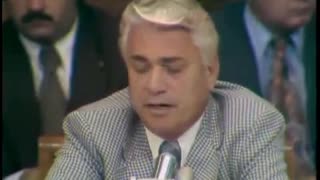 6:37:17
6:37:17
The Memory Hole
7 months agoNixon Impeachment Hearings Day 6 (1974-07-29)
1.15K -
 1:56:25
1:56:25
Nerdrotic
4 hours ago $1.92 earnedThe Mysteries of Mars and the Moon with Mike Bara | Forbidden Frontier #114
20.7K4 -
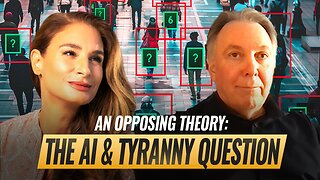 1:11:31
1:11:31
The Mel K Show
2 hours agoMel K & Chas Holloway | An Opposing Theory: The AI & Tyranny Question | 8-31-25
18K3 -
 LIVE
LIVE
Rallied
2 hours ago $1.58 earnedSolo Challenges All Day
165 watching -
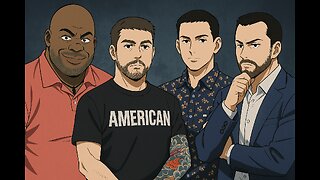 LIVE
LIVE
IsaiahLCarter
2 days agoGrandmasters and Heretics || APOSTATE RADIO #027
62 watching -
 3:03:40
3:03:40
Barry Cunningham
7 hours agoPRESIDENT TRUMP IS THE TROLLER-IN-CHIEF AND MORE BREAKING NEWS!
40.7K33 -
 13:07
13:07
Robbi On The Record
4 hours ago $1.90 earnedSweet Poison: The Big Fat Lie That’s Killing America
25.1K10 -
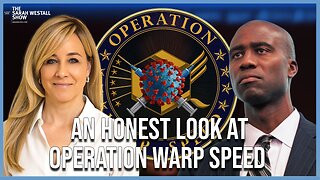 1:00:09
1:00:09
Sarah Westall
4 hours agoFlorida Surgeon General: Operation Warp Speed plus Attacks on RFK Jr w/ Dr Ladapo
25.4K10 -
 11:52
11:52
Tundra Tactical
9 hours ago $1.18 earnedWhy the SIG P320 Is the King of Gun Memes 💥😂
17.5K -
 1:39:35
1:39:35
Kevin Trudeau
10 hours agoKevin Trudeau: The Complete Creation Algorithm to Manifest Your Goals & Desires
19.7K7